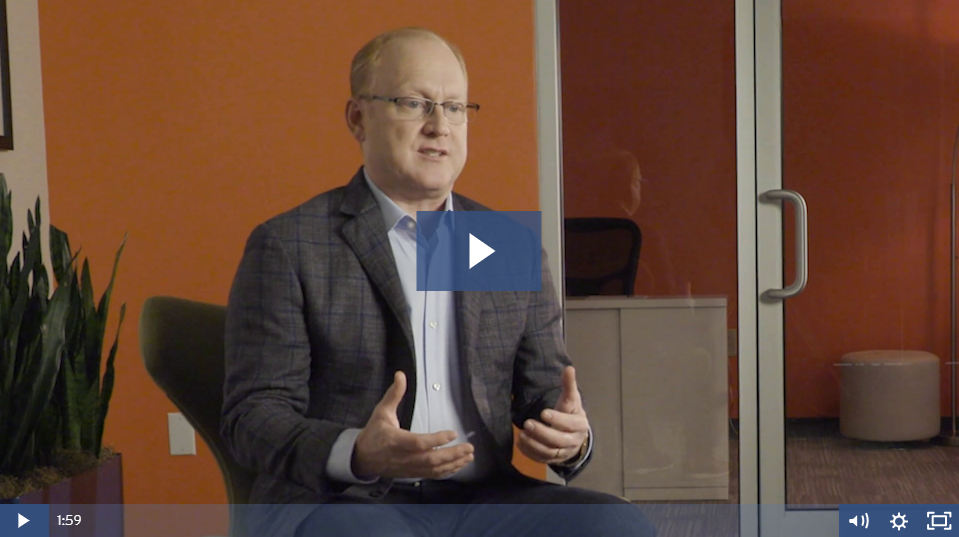
In our AI conversation video series, we will be answering nine of the most frequently asked and debated questions regarding artificial intelligence. These are the questions that you keep hearing at conferences, during webinars, and on social media. Each video reveals our answer to a challenging AI question in a quick and to-the-point manner. In our fourth video in the series, TeraRecon President and CEO, Jeff Sorenson explores why there will never be a day that AI will replace radiologists, why chains of AI are the key to AI and radiologists working together in the future, and much more!
No, there will not be a day when artificial intelligence can do everything that a radiologist would do to consider a study because that’s not a static thing. Much like how we have all evolved what we do in our cars because there are different kinds of instrumentation, and much like airplanes can fly themselves but still have pilots to point them in the right direction and accomplish certain kinds of missions, what artificial intelligence is going to do is bring to the forefront a new level of information and to provide insights that can’t even be seen with a human eye. We predict that radiologists will become overwhelmed by the data that we can produce out of a single study and their job will fundamentally change in that they will start to tell the tools that we are building what is important and what they want to see in order for them to practice better medicine. In that respect, we are actually going to overwhelm physicians a bit at the start and then we are going to mature our technologies to reel it back to only that which is important.
To know what is important, again, requires utilization, experimentation, and access to lots of different types of technology. Imagine that instead of running one kind of AI engine, you ran 100. If you ran 100 AI engines on every patient, then what kind of findings would you see? You can then start to think about what is important and how you would prioritize it. Probably the most exciting thing that few people talk about is that the inputs and outputs of one AI engine can actually inform the inputs and outputs of other AI engines. For example, maybe one engine is highly sensitive at detecting something but not specific and has lots of false alarms, and another one isn’t very sensitive at detecting it but never has false alarms. When you put those two things together, you can get a very good answer by using two products together. That is why these point solutions for AI are probably not the answer, but in fact chains of AI that are being put together and used in accordance with the physician’s belief system. The measure of that is that physicians know when they are being a better doctor, they know when they’ve got tools at their disposal that they didn’t have and when they can deliver more precise care than they could in the past. Surely, we need to be measuring this and proving the outcome of these technologies.
At TeraRecon, we are saying “let’s focus on the ‘how’ first”. We will never solve this problem unless we have access to lots of different types of AI to see what works and what has value. We need ways that we can program that to the physician’s belief system, so we don’t bother them with things they don’t want to see. EnvoyAI® is really not just a marketplace for AI, it is a technology platform that allows you to simplify the access of that AI and also have it be placed in your workflow simply. The Northstar™ AI Explorer is about understanding from pure use - no buttons - truly pure use, understanding what the physician appreciates and allowing that to be put into their workflow with little effort.
At the end of the day, EnvoyAI and the Northstar AI Explorer are about creating a friction free method to put AI into your workflow. Then we will start to focus on the “what”. That is really what the big deal is about Intuition being able to ingest and import AI outputs. Intuition is a tool where you can do spectacularly advanced things and the Northstar AI Explorer is a tool that you can use to decide exactly what data you want flashed in front of your eyes. Those two workflows are very different. We may have the right kind of AI where you just want to see the result and you appreciate it, but it seems more likely today that we’ve got the kind of AI that can help you create candidate findings and do segmentation more accurately. At the end of the day, the technologist or the physician is going to do the same task that they always did, just better. That is where Intuition really comes into the picture; it is a platform that is fully ready to take on this task and is now connected to AI through EnvoyAI.
These Stories on Artificial Intelligence
TeraRecon Headquarters
4309 Emperor Blvd, Suite 310
Durham, NC 27703
Tel: 650.372.1100
Fax: 650.372.1101
info@terarecon.com
All offerings are subject to availability and regulatory clearance, which may vary by country. Please verify product status with your local TeraRecon representative.
No Comments Yet
Let us know what you think